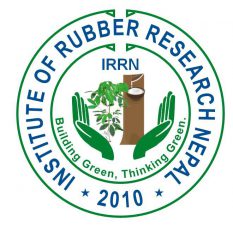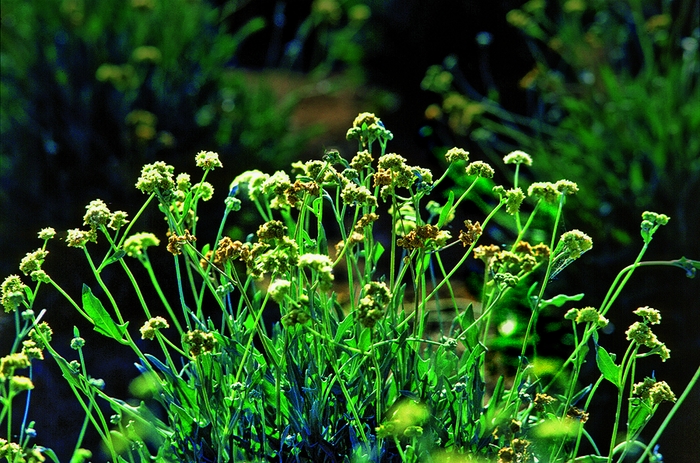As a new intern in the Master Gardener program, I have learned a great deal about the environment, soil, and plant specimens of Collin County. While it is different in many ways from my native Nepal, there is at least one of my favorite plants that will grow in both places: the Guayule rubber plant.  Collin County’s environment is very different from Nepal, whose elevation ranges from 70 meters to Mount Everest’s 8,848 meters. Not unlike Texas, however, it enjoys all the climates with alpine, temperate sub-tropical and tropical regions. Surprisingly, the rubber plant not only grows here but can thrive. The Guayule rubber plant, Parthenium argentatum Grey, is a three foot woody, perennial shrub that’s native to South Texas and can even be grown in North Texas micro-climates. It grows best in desert conditions, needs little water and no pesticides, and conserves soil. On the large-scale, commercial side, the Natural Rubber (NR) plant is in demand. NR is a part of everyday life, whether you find it in giant tire tube or 300 types of medical devices. Yet, three countries in Southeast Asia produce 80 percent of NR. They use a different plant, however, and it is responsible for more allergic reactions than rubber made from Parthenium argentatum Grey. According to International Rubber Study Group, serious shortages are predicted by 2010, which will send NR prices skyrocketing. The United States imports more than 1.2 million tons per year and U.S consumes 14 percent of world supply. We also send $3 billion annually into Asia for its NR. Guayule was commercially grown in the U.S. Southwest, including Texas, on 32,000 acres during World War II. Its recovery popularity came about during the 1980s AIDS crisis when a surge in rubber glove usage revealed how many people were allergic to latex. Eight to 12 percent of health care workers are estimated to become allergic or sensitized to rubber made from the Hevea rubber plant. Today, Arizona-based Yulex Corporation is the first international company to produce latex from Guayule. Katrina Cornish, Ph.D, is one of the world’s foremost authorities on rubber plants and is senior vice president of research and development for Yulex. She says that more than million acres in Texas hold great potential for commercial Guayule crops. It takes two years to first harvest, can be used in a full range of NR products, expands rapidly, and can be harvested mechanically. According to Yulex Corporation CEO and President Martin, the United States would require four million acres of Guayule to be selfsufficient. NR is the second largest raw material import next to oil, but no stockpile exists. If the supply of Asian rubber were to dry up, there is no back-up supply. Therefore, we all should plant one to a few native Guayule plant in our home gardens and share information about it with the community. It is equally importance to create public awareness for its future commercial cultivation among the policy makers, industrialists, farmers, experts to answer of dreams and selfsufficiency.
Collin County’s environment is very different from Nepal, whose elevation ranges from 70 meters to Mount Everest’s 8,848 meters. Not unlike Texas, however, it enjoys all the climates with alpine, temperate sub-tropical and tropical regions. Surprisingly, the rubber plant not only grows here but can thrive. The Guayule rubber plant, Parthenium argentatum Grey, is a three foot woody, perennial shrub that’s native to South Texas and can even be grown in North Texas micro-climates. It grows best in desert conditions, needs little water and no pesticides, and conserves soil. On the large-scale, commercial side, the Natural Rubber (NR) plant is in demand. NR is a part of everyday life, whether you find it in giant tire tube or 300 types of medical devices. Yet, three countries in Southeast Asia produce 80 percent of NR. They use a different plant, however, and it is responsible for more allergic reactions than rubber made from Parthenium argentatum Grey. According to International Rubber Study Group, serious shortages are predicted by 2010, which will send NR prices skyrocketing. The United States imports more than 1.2 million tons per year and U.S consumes 14 percent of world supply. We also send $3 billion annually into Asia for its NR. Guayule was commercially grown in the U.S. Southwest, including Texas, on 32,000 acres during World War II. Its recovery popularity came about during the 1980s AIDS crisis when a surge in rubber glove usage revealed how many people were allergic to latex. Eight to 12 percent of health care workers are estimated to become allergic or sensitized to rubber made from the Hevea rubber plant. Today, Arizona-based Yulex Corporation is the first international company to produce latex from Guayule. Katrina Cornish, Ph.D, is one of the world’s foremost authorities on rubber plants and is senior vice president of research and development for Yulex. She says that more than million acres in Texas hold great potential for commercial Guayule crops. It takes two years to first harvest, can be used in a full range of NR products, expands rapidly, and can be harvested mechanically. According to Yulex Corporation CEO and President Martin, the United States would require four million acres of Guayule to be selfsufficient. NR is the second largest raw material import next to oil, but no stockpile exists. If the supply of Asian rubber were to dry up, there is no back-up supply. Therefore, we all should plant one to a few native Guayule plant in our home gardens and share information about it with the community. It is equally importance to create public awareness for its future commercial cultivation among the policy makers, industrialists, farmers, experts to answer of dreams and selfsufficiency.
This article was originally published in ECHO Newsletter (November-December 2008), the newsletter of Texas AgriLife’s Community Horticultural Outreach. Tilak Bhandari is a current CCMGA intern and moved to Collin County in 1999. He is also a Member of American Society of Horticultural Science and The Association for the Advancement of Industrial Crops, has a bachelor’s of science in agriculture, and is a professionally certified Natural Rubber Expert.

